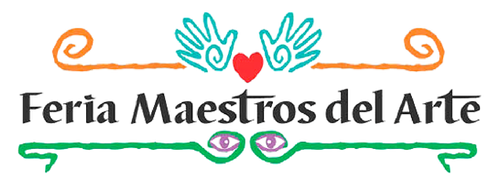
Manuel de la Peña, Guadalajara, Jalisco
Manuel de la Peña has studied art since he was very young — drawing, painting, sculpture. He began developing his style and technique and participated in art competitions winning prizes in the children and youth painting categories. He went on to study fine arts at Guadalajara CEDART José Clemente Orozco. He apprenticed with regional renowned painters and from there, his artistic exploration began until he achieved the artistic abilities he has today.
Manuel likes to work with paper because of Mexico’s history with this art form from pre-Hispanic to contemporary times. He inspires himself to generate new concepts, mixing them with different artistic techniques. The entire creative process is entirely done by hand, from planning, to cutting of the pieces, the coloration and presentation framed — each piece is 100% handmade in Mexico. His latest innovation is using grana de cochineal (a small insect that lives on cactus and yields a bright red when squashed). It is highly valued and used by rug weavers, however, Manuel has again taken an age-old technique and incorporated it into his new art form.
Manuel’s grandfather drew and wrote poetry. Other family members involved in the arts are Paco de la Peña/artist and cultural promoter (uncle), Jorge de la Peña/sculptor (uncle), Margarita de la Peña/natural media artist (aunt), Enrique Aguayo de la Peña/water-colorist (uncle). His is a personal exploration of techniques, but he has plans to share his knowledge by teaching others.
Manuel also recreates chaneques (masks) as they were called by the Aztecs. These masks are a lost Mexican art form. They are legendary creatures in Mexican folklore conceived of as small, sprite-like beings and elemental forces and guardians of nature. By tradition, these beings would attack intruders, frightening them so that their soul would abandon their body, which the chaneques enclosed in the depth of the land. If the victim did not recover their soul through a specific ritual, he or she would become ill and die soon after.
In some contemporary legends, chaneques are described as children with the face of old men or women, that make people go astray for three to seven days, after which the victims cannot recall anything that happened . . . although it is thought that they are taken by the chaneques to their home in the Underworld, of which the entrance is a dry kapok tree
Guadalajara, Jalisco
33 1066 7699 WhatsApp
manueldlapena@gmail.com
Facebook: manueldelapenaartistavisual

